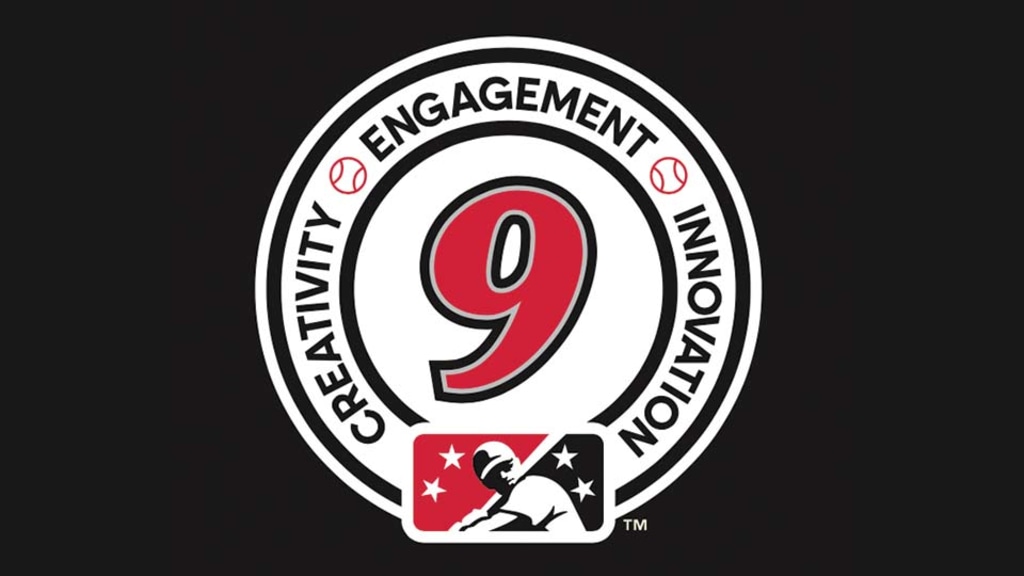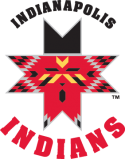
 In celebration of Black History Month, throughout February, teams across Minor League Baseball are looking back at five of the best Black players to suit up for their club or play for a team within its market.
In celebration of Black History Month, throughout February, teams across Minor League Baseball are looking back at five of the best Black players to suit up for their club or play for a team within its market.
While some of these standout performers went on to long and illustrious Major League careers, others simply had great Minor League careers or, in some cases, just one incredible season that went down as “a year for the ages.”
Here is a look at five of the best Black baseball players ever to suit up for the Indianapolis Indians, Indianapolis Clowns and Indianapolis ABCs.
Andrew McCutchen
After being selected by Pittsburgh as the 11th overall pick in the 2005 First-Year Player Draft, it took just two years for outfielder Andrew McCutchen to rise from rookie ball to Triple-A. Following a brief 17-game showing with Indianapolis in 2007 in which he hit .313, he paced the 2008 Indians in batting average (.283), hits (145), doubles (26) and OPS (.770) while finishing second in stolen bases (34) to earn himself a spot on the International League midseason All-Star team and a selection to the Futures Game.
Despite the stellar season, the budding five-tool superstar found himself in Indy once again to start the 2009 campaign. He hit safely in 17 of his last 20 games in an Indians uniform, compiling a .368 average, nine extra-base hits, 11 RBI and 16 runs scored during the stretch. He then broke into the majors with Pittsburgh on June 4 and collected two hits, three runs scored, one RBI and a stolen base in his MLB debut, and never looked back. He has become a five-time National League All-Star (2011-15), four-time Silver Slugger (2012-15), Gold Glove Award winner (2012) and MVP (2013). His NL MVP honor made him just the sixth former Indian to win an MVP Award and the first since Hall of Famer Larry Walker in 1997.
In addition to his numerous on-the-field accolades, McCutchen was presented with the Roberto Clemente Award in 2015, given annually to an MLB player who “best represents the game of baseball through extraordinary character, community involvement, philanthropy and positive contributions, both on and off the field.”
Razor Shines
A name synonymous with Indianapolis Indians baseball, Razor Shines played in over 800 games for the Indians across nine seasons (1984-89, 1991-93). Shines’ best season with Indianapolis came in 1984, his first campaign in the Circle City, when he had 26 doubles, 18 home runs and 80 RBI to earn Team MVP honors. Overall, his longevity and success has him among Indy’s all-time leaders in home runs (T-3rd, 68), RBI (4th, 404) and doubles (5th, 138).
While he only saw brief major league action in parts of four seasons, Shines played a huge role in guiding Indianapolis to American Association supremacy throughout the 1980s. He was part of four American Association pennant-winning teams (1984, ’86, 1988-89) and contributed to four consecutive AA postseason championships (1986-89). His image and likeness will forever be connected to the baby-blue Montreal Expos uniform era of dominance in Indianapolis Indians history.
Shines served as a player-coach for Indy in 1993, the final year of his playing career, and attended the final game played at Bush Stadium on July 3, 1996. He managed and coached for various minor and major league teams (White Sox, 2007; Mets, 2009-10) up through 2015. Shines most recently returned to Indianapolis in August 2019 to celebrate the 30-year anniversary of the Indians 1989 American Association championship during Fan Appreciation Weekend.
Minnie Miñoso
After three years with the New York Cubans of the Negro National League, two of which he was named an All-Star, Minnie Miñoso made his major league debut with Cleveland on April 19, 1949, at 23 years old. Following the Golden Days Era Committee vote in December 2021, he will become the 13th former Indianapolis Indian enshrined in the National Baseball Hall of Fame.
In 17 major league seasons, Miñoso – nicknamed the Cuban Comet – consistently ranked among American League leaders, topping the AL three times in stolen bases (1951-53) and triples (1951, ’54, ’56), and once in total bases (1954), doubles (1957) and hits (1960). The nine-time All-Star (1951-54, ‘57, 1959-60 [midseason and postseason]) and three-time Gold Glove Award winner (1957, 1959-60) finished fourth in AL MVP voting four times, the first coming in his first full MLB season when he also finished second in the AL Rookie of the Year race.
Miñoso, at age 38, appeared in 52 games with Indianapolis – then-affiliate of Chicago (AL) – in 1964. He hit .264 (47-for-178) with 11 doubles, four home runs, 26 RBI and six stolen bases. It was his first trip back to the minor leagues since 1950 with Triple-A San Diego. He was inducted into the Mexican Baseball Hall of Fame in 1996 and received 14 votes from the 16-member Golden Days Era Committee on Dec. 5, 2021, to be elected into the National Baseball Hall of Fame. Miñoso, who died on March 1, 2015, will be officially inducted posthumously in the Hall of Fame Class of 2022 on July 24 in Cooperstown.
Hank Aaron
In 23 years in Major League Baseball, Hank Aaron became known as one of the best to ever step foot on a diamond. He hammered – a good testament to his well-known nickname, Hammerin’ Hank – 755 home runs over the course of his lengthy major league career, with an MLB-leading 44 in 1957 when he was voted National League MVP. He is the current record holder for career RBI (2,297) and total bases (6,856) over 3,298 games. He spent 21 of his 23 MLB seasons with the Braves, from Milwaukee to Atlanta where he died in 2021. However, that’s not where his career began.
As an 18-year-old, Aaron spent 26 official games donning an Indianapolis Clowns uniform. That’s according to The Howe Sports Bureau, because those stats can seldom be found anywhere else. In those games, he hit .366 with five home runs, 33 RBI, 41 hits and nine stolen bases – numbers that do not count toward his career MLB totals.
Over his career, he led MLB four times in RBI (1957, ’60, ’63 and ’66) and total bases (1957, 1959-60, ’63), three times in slugging percentage and OPS (1959, ’63, and ’71), twice in total hits (1956, ’59) and runs (1963 and ’67), and once in batting average (1959), not to mention the seasons in which he just led the National League. In addition to his 1957 NL MVP Award – the year in which he led the Milwaukee Braves to a World Series title over the Yankees – he was named an All-Star 25 times over 21 consecutive seasons from 1955-75, earned MVP votes 19 consecutive seasons from 1955-73 and won three Gold Glove Awards (1958-60).
Oscar Charleston
Hall of Famer Oscar Charleston’s long and historic career began in his hometown of Indianapolis. After working as the batboy for the Indianapolis ABCs as a child and spending his mid-to-late teenage years serving in World War I, Charleston hit cleanup for the ABCs in 1920, the first year of the National Negro League.
Nicknamed the Hoosier Comet, Charleston led the league with 122 hits, 80 runs scored and 11 triples that season. After a year away, he returned to Indianapolis in ’22 and continued to flash his speed and just a hint of power. He led the league in almost every offensive category that season, setting career highs in games played (101), runs scored (105), total hits (150), triples (18) and RBI (102). In 18 years with seven different teams, Charleston played in 916 games and hit .364 with 80 triples, 143 home runs, 853 RBI and 209 stolen bases.
During his playing career Charleston also served as manager of the Harrisburg Giants (1924-26), Hilldale Club (1929), the Pittsburgh Crawfords-turned Toledo/Indianapolis Crawfords (1933-40) and Philadelphia Stars (1941). He managed the Stars in 1948 at the age of 51 and came out of retirement in 1954 to manage the Indianapolis Clowns, a team that featured two women – Connie Morgan and Mamie “Peanut” Johnson – on its roster.
Other Black players who played for the Indians or in the Indianapolis market and narrowly missed top five recognition include George Foster, Ken Griffey Sr., Eric Davis, Hal McRae, Don Buford, Dallas Williams and Larry Raines.
